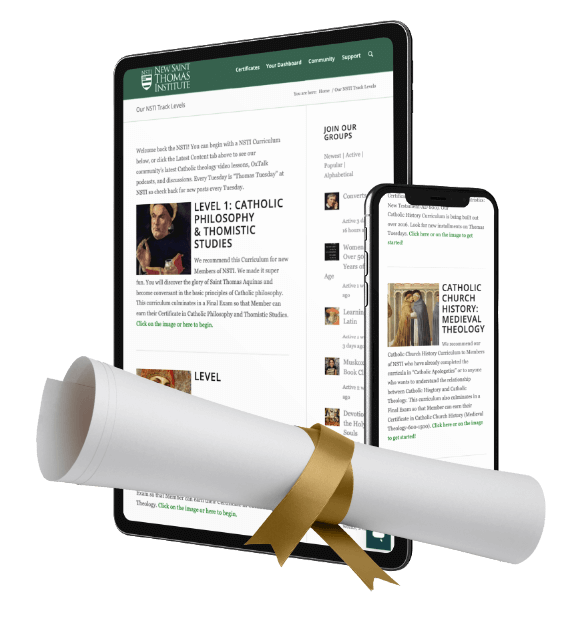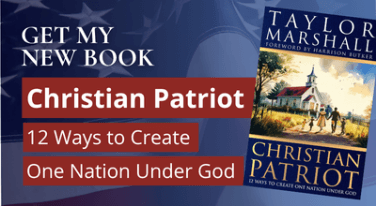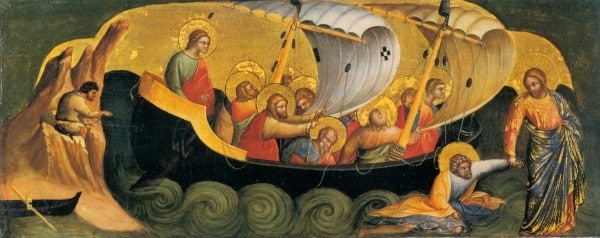John 6 and Judaism: The Jewish Symphonic Sandwich Structure of the John’s Gospel
As you already know, John chapter 6 is the treasure trove passage for demonstrating that the Eucharist is the true Body, Blood, Soul, and Divinity of Our Lord Jesus Christ. It contains those beautiful teachings, such as “Fo my flesh is food indeed and my blood is drink indeed” (Jn 6:55) and many more.
What’s not often noted in the strategized context of this passage within the structure of Saint John’s Gospel:
The Jewish scriptures often employ a chiastic structure – the stacking of passages in an inverted narrative. It’s like sandwich with the bread on the outside and the meat in the middle.
Saint John does this exact thing when places two important sections just before the “Bread from Heaven” passage of John 6:22-59 and two more sections after it in John 6-7. If you understand this, you can make a better defense of Christ’s teaching about His Body and Blood in John 6.
Here’s the outline and climax of the passage in John laid out as a chiastic outline (climax happens in the middle of a literary sandwich):
Chiastic Context of Eucharistic Teaching in John
a. Moses’ and God the Father’s testimony to Christ (Jn 5:30)
b. Feeding 5,000 (Jn 6:1-15)
c. Christ walks on water (Jn 6:16-21)
x. The Bread of Life Discourse (Jn 6:22-59)
cc. Disciples Leave but Peter says, “To whom shall we go….” (Jn 6:60-71)
bb. Unbelief of Christ’s brethren (Jn 7:1-9)
aa. Christ at Feast of Tabernacles (Jn 7:10-24)
Why this is important!
- As you can see in this chiasm or “sandwich” the the outer layers (a and aa) refer to the Jewish context. God’s testimony through Moses’ testimony mirror the Christ as the fulfillment of the Israelite feast of tabernacles – when God tabernacles or dwells among men. (Of course, Catholics call the box holding the Eucharist a “tabernacle” for this reason.)
- In the next inner layer (b and bb), you can see that Christ feeds 5000 – His great public miracle is paired with the unbelief of His brethren. Notably, Christ’s ability to multiply “bread” is John’s way of showing Christ has supernatural power over the nature of ordinary things…like bread.
- The next inner layer (c and cc) has Christ walking on water – yet another proof given by John that not only does Christ have power over natural things (like bread), but His own body has supernatural powers over nature. The multiplying of bread and His walking on water show that there is something miraculous about “bread in the hands of Christ” and something miraculous about the “Body of Christ” which can defy natural laws regarding gravity and water. It’s paired with Peter’s act of faith.
- In the middle we get the Bread of Life discourse, which is power packed with theology about Christ, bread, body, blood, Moses, and eternal life. Once you see the chiasm or “literary sandwich” surrounding the passage, the argument is even more powerful.
As you read this passage or use it for Catholic apologetics, be aware that it’s not just the individual verses that are powerful – it’s the entire symphonic arrangement of this section in Saint John’s Gospel that argues for the Holy Eucharist and the miraculous transformation of mere bread and wine into the very incarnate Son of God Himself.
Challenge: Some time this week, read John 5-7 altogether in one sitting. Take notes and see if you find more layers hidden in the text. I bet you will!
[reminder]
What to Watch Next
SHOP THE TAYLOR MARSHALL STORE
Dive Deeper

GET CONFIDENT IN YOUR FAITH
Explore the fascinating world of Catholic teachings with Dr. Marshall. Together you’ll unpack the brilliant answers the Church gives to tough questions about the Faith. The best part: you go at your own pace. Start this exciting journey today.


 >
>



